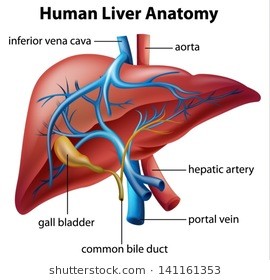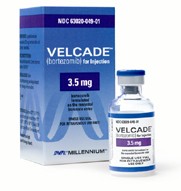
Recently Diagnosed or Relapsed? Stop Looking For a Miracle Cure, and Use Evidence-Based Therapies To Enhance Your Treatment and Prolong Your Remission
Multiple Myeloma an incurable disease, but I have spent the last 25 years in remission using a blend of conventional oncology and evidence-based nutrition, supplementation, and lifestyle therapies from peer-reviewed studies that your oncologist probably hasn't told you about.
Click the orange button to the right to learn more about what you can start doing today.
- You are here:
- Home »
- Blog »
- Multiple Myeloma »
- Myeloma Symptoms, Side Effects- Liver
Myeloma Symptoms, Side Effects- Liver

In large clinical trials of bortezomib, elevations in serum aminotransferase levels were common, occurring in ~10% of patients. However, values greater than 5 times the upper limit…”
Hi David, When I had my last Velcade treatment July 1st, my bilirubin number (liver function) went to 1.2 from .07 a week earlier, do I need to be concerned?
I researched the info and found that bilirubin has to do with liver function. Is revlimid or Velcade causing the issue or is it one of the many issues that affect MM patients? Can the Black Seed Oil help with that also? Tim
Hi Tim-
You are correct in the the bilirubin blood test is the diagnostic test that is a measure of people’s liver function. As you can see from the info linked and excerpted below, the normal range of serum bilirubin is
- 0.1–1.2 mg/dl – Total serum bilirubin level
I am going to assume that you are referring to “total serum bilirubin level.” While an increase from .7 to 1.2 is an increase of over 70% and looks like a large jump, you are still in the normal range.
While we’re on the subject of bilirubin and multiple myeloma, it makes sense to ask two more questions:
- Is liver damage is a common symptom of multiple myeloma?
- Is liver damage is a common side effect of chemotherapy- either Revlimid (lenalidomide) or Velcade (Bortezomib)?
The answer to the first question is no. Newly diagnosed MM patients rarely have liver damage when they are first diagnosed. Bone, kidney, anemia and even heart damage is/are more common symptoms of MM that liver damage is.
The answer to the second question- “does chemotherapy cause liver damage?” is sometimes. According to the article linked and excerpted below, Velcade causes liver damage to about 10% of MM patients. The article linked below that one states that while revlimid rarely causes liver damage (less than 1%), when damage to the liver did occur, it was serious- “The outcome was fatal in 5% of cases…”
After my own chemotherapy (not velcade or revlimid) I took milk thistle for about 2 years. I had read that milk thistle cleansed the person’s liver. I linked a study below about milk thistle and kidney health.
Thanks very much for asking about liver health and MM, Tim. Let me know if you have any other questions.
Hang in there,
David Emerson
- MM Survivor
- MM Cancer Coach
- Director PeopleBeatingCancer
Recommended Reading:
- Multiple Myeloma Treatment- “Curative” Therapy for is Anything But…
- Intravenous Vitamin C for Multiple Myeloma- Kidney, Liver Damage?
- Multiple Myeloma Explained
Bilirubin
“Bilirubin (BR) is a yellow compound that occurs in the normal catabolic pathway that breaks down heme in vertebrates. This catabolism is a necessary process in the body’s clearance of waste products that arise from the destruction of aged or abnormal red blood cells.[1]
Function[edit]
Bilirubin is created by the activity of biliverdin reductase on biliverdin, a green tetrapyrrolic bile pigment that is also a product of heme catabolism. Bilirubin, when oxidized, reverts to become biliverdin once again. This cycle, in addition to the demonstration of the potent antioxidant activity of bilirubin,[9] has led to the hypothesis that bilirubin’s main physiologic role is as a cellular antioxidant.[10][11][12]
Blood levels[edit]
The bilirubin level found in the body reflects the balance between production and excretion. Blood test results should always be interpreted using the reference range provided by the laboratory that performed the test. The SI units are μmol/L. Typical ranges for adults are:[30]
- 0–0.3 mg/dl – Direct (conjugated) bilirubin level
- 0.1–1.2 mg/dl – Total serum bilirubin level
Liver involvement in multiple myeloma
“One hundred twenty‐eight records of patients with multiple myeloma were reviewed to assess the incidence and manifestations of liver involvement. Histologic study of the liver was available in 21 patients. Diffuse infiltration of the liver by plasma cells was observed in 10 patients, myeloid metaplasia in four, amyloidosis in two, toxic hepatitis in two, and extrahepatic cholestasis secondary to infiltration of the peripancreatic tissue by plasma cells in one. The clinical signs of plasma cell infiltration of the liver consisted of hepatomegaly in seven patients, mild elevation of liver enzymes in five, and portal hypertension in two. Jaundice was only observed in patients with hepatitis or extrahepatic cholestasis.
Liver infiltration by plasma cells did not appear to have a major prognostic significance…”
Bortezomib- Clinical and Research Information on Drug-Induced Liver Injury-
“Bortezomib is associated with a low rate of serum enzyme elevations during treatment and to rare instances of clinically apparent, acute liver injury…
Hepatotoxicity
In large clinical trials of bortezomib, elevations in serum aminotransferase levels were common, occurring in ~10% of patients. However, values greater than 5 times the upper limit of normal (ULN) were rare, occurring in <1% of recipients.
Cases of clinically apparent liver injury including acute liver failure have been reported in patients receiving bortezomib; however, in many instances multiple concomitant medications were being taken and the specific role of bortezomib in causing the liver injury was not always clear.
The onset of injury was typically during the first cycle of therapy and usually, but not always recurred with retreatment.
Cases characterized by acute hepatic necrosis and others by cholestatic hepatitis have been published, some of which were fatal. Hepatotoxici15ty is listed as a warning in the product label for bortezomib and monitoring of serum enzymes during treatment is recommended…”
Lenalidomide (Revlimid): risk of serious hepatic adverse drug reactions
“Risk of hepatic adverse drug reactions-
Suspected adverse hepatic reactions have been reported overall in <1% of patients treated.
Of these reactions, abnormal liver investigation results, and clinical signs and symptoms of hepatic disorders are the most common (58.7%). The spectrum of hepatic suspected adverse reactions reported also includes hepatic failure, fibrosis, and cirrhosis (17.2%); and cholestasis and jaundice of hepatic origin (13.8%).
The remaining reports (10%) describe non-infectious hepatitis, liver-related coagulation and bleeding disorders, and neoplasms. The outcome was fatal in 5% of cases…”
Milk Thistle: Effects on Liver Disease and Cirrhosis and Clinical Adverse Effects: Summary
“This evidence report details a systematic review summarizing clinical studies of milk thistle in humans. The scientific name for milk thistle is Silybum marianum. It is a member of the aster or daisy family and has been used by ancient physicians and herbalists to treat a range of liver and gallbladder diseases and to protect the liver against a variety of poisons.
Two areas are addressed in the report:
-
Effects of milk thistle on liver disease of alcohol, viral, toxin, cholestatic, and primary malignancy etiologies.
-
Clinical adverse effects associated with milk thistle ingestion or contact.
The report was requested by the National Center for Complementary and Alternative Medicine, a component of the National Institutes of Health, and sponsored by the Agency for Healthcare Research and Quality…”
Hepatotoxicity and renal toxicity induced by radiation and the protective effect of quercetin in male albino rats
“PURPOSE: Although radiation is one of the basic methods commonly used in cancer treatment, it inevitably enters the field of treatment in healthy tissues and is adversely affected by the acute and chronic side effects of radiation. This study evaluated the possible protective effects of quercetin, an antioxidant agent, against liver and kidney damage in rats exposed to a whole-body single dose of radiation (10 Gy of gamma-ray)…
CONCLUSIONS: With the results obtained from the study; Quercetin is thought to have a protective potential against radiation-induced liver and kidney damage due to its radioprotective effect…”


